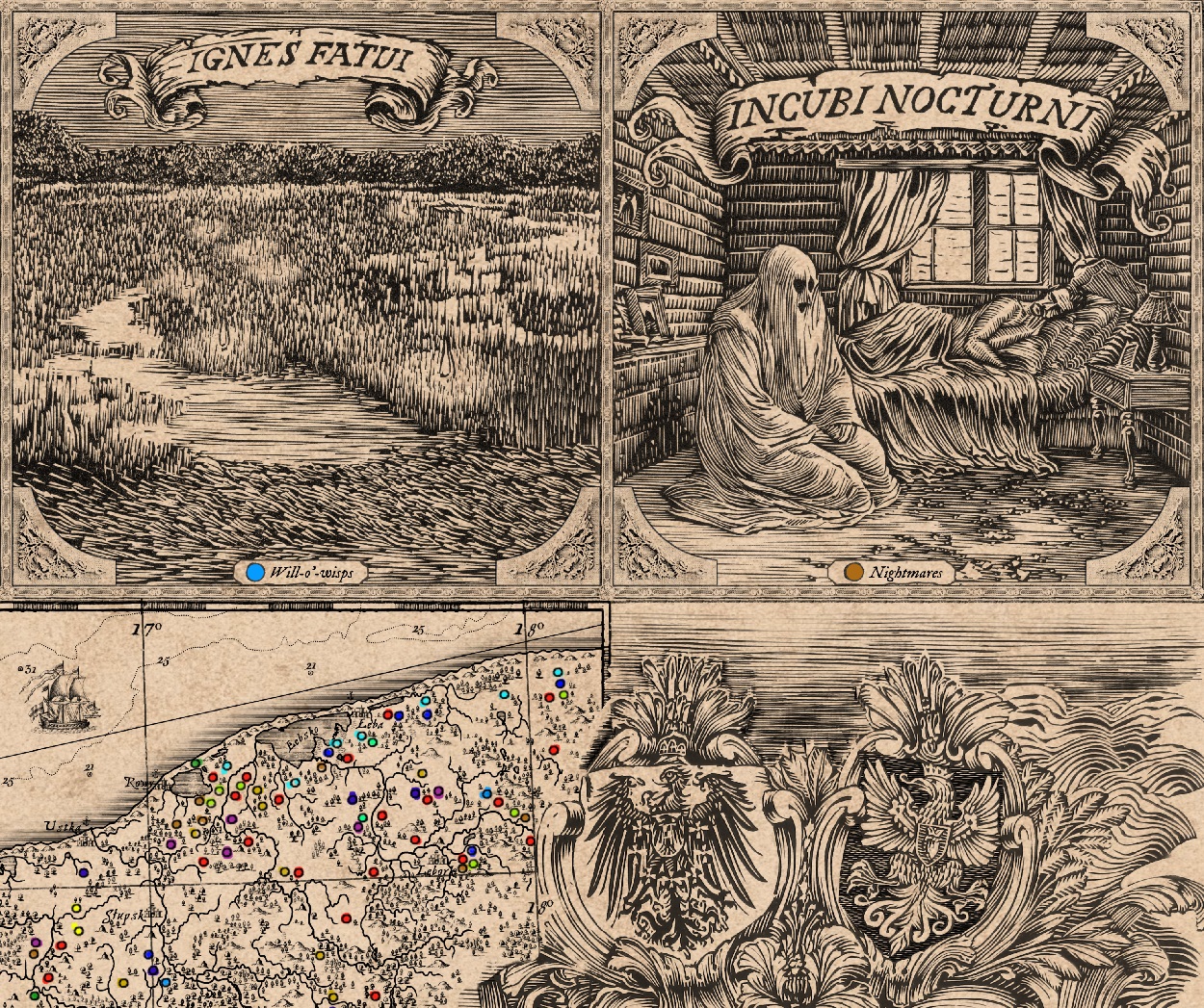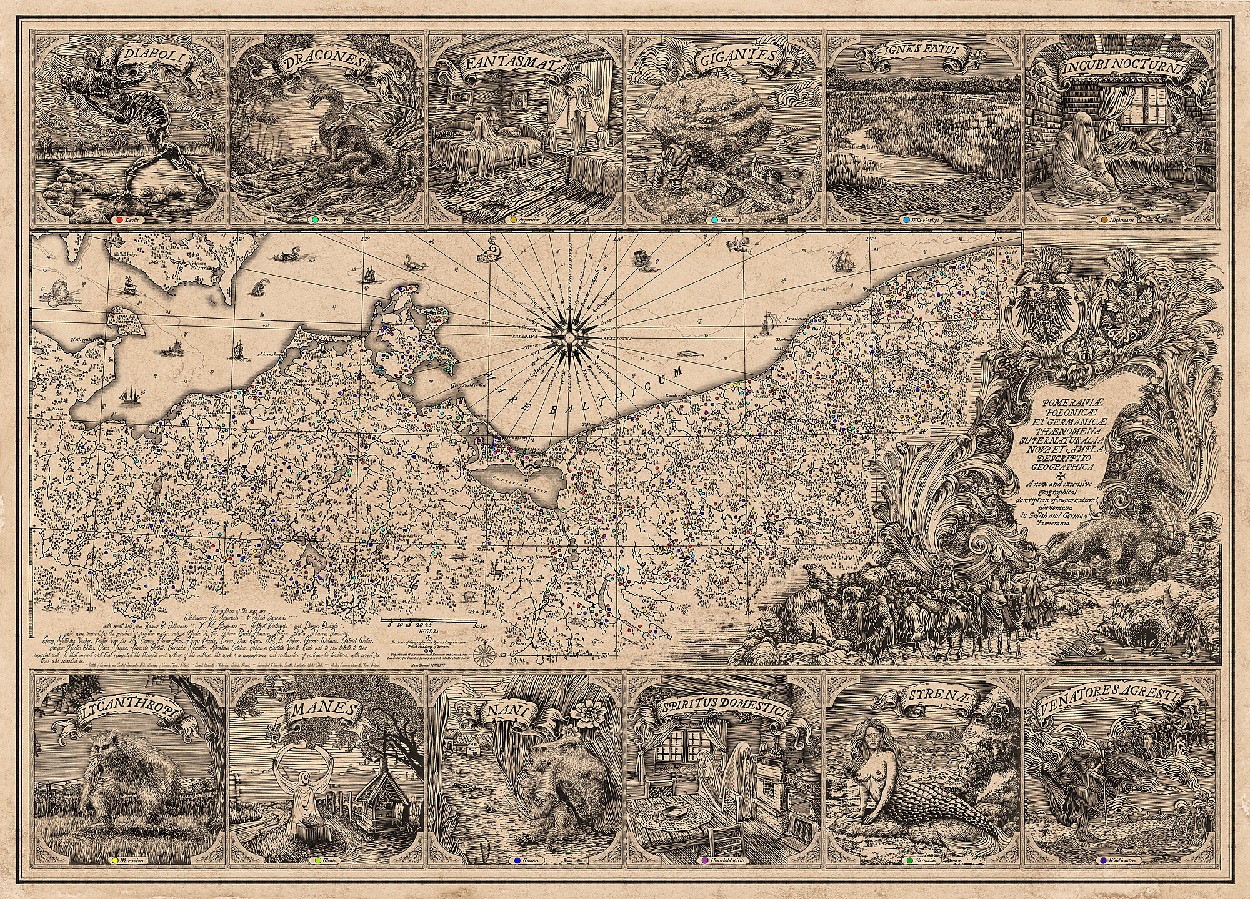Researchers from the Polish Academy of Sciences have created a cartometric map to indicate the places drawn from ethnographic and folklore sources linked to demonic and mythological creatures.
The map is part of a study published in the Journal of Maps, that shows the historical regions of Pomerania and Mecklenburg at a scale of 1:720,000.
This study seeks to blend the artistic and symbolic features of Renaissance maps with modern GIS tools, pinpointing the origins of stories about werewolves, devils, dragons, house spirits, giants, and elves, as recorded by German and Polish folklorists.
A total of 1,200 supernatural accounts written by 19th and early 20th-century folklorists were mapped across 600 locations, each tied to specific landscape features.

“We were mainly interested in local stories about uncanny events associated with a specific place. For example, religious legends in which it was imagined that witches met on this particular mountain, this boulder was once thrown by a giant, the devil built a dam on the lake or will-o’-the-wisp appeared in this swamp,” said Ethnologist Dr. Robert Piotrowski from the Interdisciplinary Anthropocene Research Team at the Institute of Geography and Spatial Organisation of the Polish Academy of Sciences.
The authors of the study felt that the aesthetics of Italian Renaissance maps would best reflect the climate of the era as they were regarded as works of art, with many considered masterpieces of refined craftsmanship that were famous for their depictions of monsters.
“In the past, these monsters were supposed to fill blank spaces – for example, water or places on maps that were not yet fully known,” explained Dr. Dariusz Brykała, a geographer specialising in the history of cartography from IGiPZ PAN.
According to the study authors, these maps can now draw on historical techniques and aesthetics while serving as a lens to explore the evolution of cartography, which has transitioned since World War II from an artful and scientific practice to modern, digital, and interactive forms.
The map is available online for free as part of a scientific publication in the Journal of Maps.
Header Image Credit : Journal of Maps
Sources : PAP – https://doi.org/10.1080/17445647.2024.2434015





